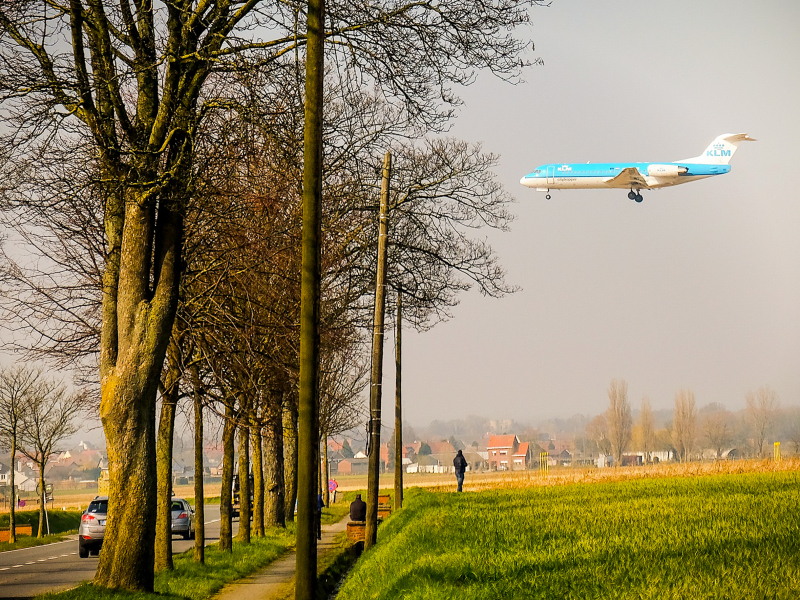Impact analysis of flight restrictions for Brussels Airport
23043
From 2023 to 2024
TML analysed the effects of two operating restrictions for Brussels Airport: limiting the total number of flights to 220,000 per year and a night ban. The study concluded that both measures reduce flight frequencies, resulting in reduced noise and air pollution, with greater short-term health gains with a night ban.
Brussels Airport is the main airport in Belgium, with 178 930 flights in 2022 and as many as 234 460 flights before the Covid pandemic in 2019. This number is expected to increase annually. In this study, together with Walter J.J. Manshanden (NEO Observatory), we analysed the effect of two operating restrictions for Brussels Airport:
- A limitation of the total number of flights to 220 000 flights/year, also known as a flight restriction.
- A ban on night flights or a night ban.
Currently, 16 000 night flights per year are legally allowed at Brussels Airport - that is, flights between 23h00 and 6h00. The majority (53% - 90%) of these night flights are cargo flights, although some passenger flights also take place. Especially between 23h00 and midnight and between 5h00 and 6h00, a number of passenger flights fly, as a larger spread over time facilitates more outward and return flights and better transfer connections. We examined two variants of a nighttime ban: a maximum scenario where flights move away from Zaventem, and a minimum scenario where flights remain at Brussels Airport but are spread out over the day.
For both alternatives, we calculated the impact on employment, the consumer surplus (i.e., the financial effect on passengers), the monetised health cost due to noise and the monetised cost due to air pollutant and greenhouse gas emissions. We calculated these impacts using key figures, which is an interesting method but not to be equated with a full SCBA.
We came to the following conclusions:
- Both the minimum flight restriction and the maximum night ban reduce the number of flights compared to the reference scenario without restrictions.
- The effect on (in)direct employment is small, with a decrease of 0.1 to 0.2% of total employment in the long term.
- Both the minimum restriction and the maximum ban impose supply constraints, increasing ticket prices.
- Residents living near airports experience less noise pollution and negative health effects from the noise of descending and taking off aircraft.
- A smaller number of flights reduces emissions of air pollutants and greenhouse gases.
- In the short term, a night ban seems the most interesting option because it offers immediate results and has a greater health impact. A limitation to 220 000 flights is interesting in the longer term, as it avoids allowing the market and consequently the impact on the environment and public health to grow unrestrained.


